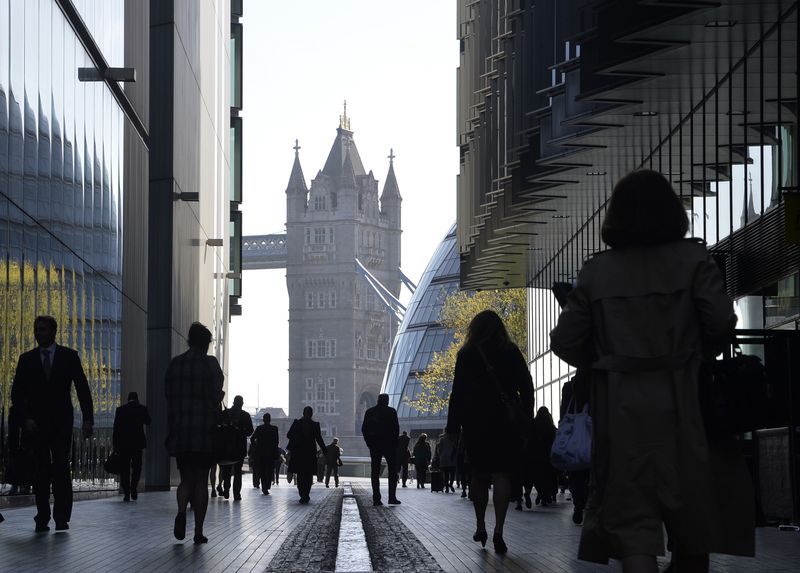LONDON (Reuters) -Britain's unemployment rate held at 3.8% in the three months to May and the number of people in work rose by the most since the middle of 2021, suggesting the cost-of-living squeeze has not yet hit demand for staff, official figures showed.
Economists polled by Reuters had expected the jobless rate to rise to 3.9% from 3.8% in the previous reading.
Tuesday's data showed an increase of 296,000 in the number of people in employment, the biggest increase since the three months to August last year.
The Reuters poll had pointed to an increase of 170,000.
While the number of people in work remains below its level just before the COVID-19 pandemic, the number of people in full-time employment hit a record high in contrast to the number of self-employed people, which remains lower.
The signs of continued strong hiring may bolster the confidence of the Bank of England about raising interest rates further next month.
But there was no clear sign in the data that might ring alarm bells at the central bank and prompt it to raise rates by more than its usual quarter percentage-point increases.
Growth in regular pay picked up slightly in the three months to May to 4.3% but represented the biggest fall in records going back to 2001 when adjusted for the consumer price index measure of inflation.
Growth in total pay, including bonuses, slowed to 6.2% from 6.8%, the Office for National Statistics said.
Many employers have resorted to paying bonuses to attract or retain staff amid a shortage of workers.

A fall of 144,000 people deemed to be inactive - neither in work, nor looking for it - was the biggest drop since the shortly before the pandemic hit Britain, meaning more people are becoming available for work and potentially easing the inflationary heat in the labour market.
The BoE has said it is prepared to act forcefully if it sees that the recent surge in inflation - which is expected to hit 9.3% in the 12 months to June in figures due on Wednesday - is becoming embedded in Britain's economy.